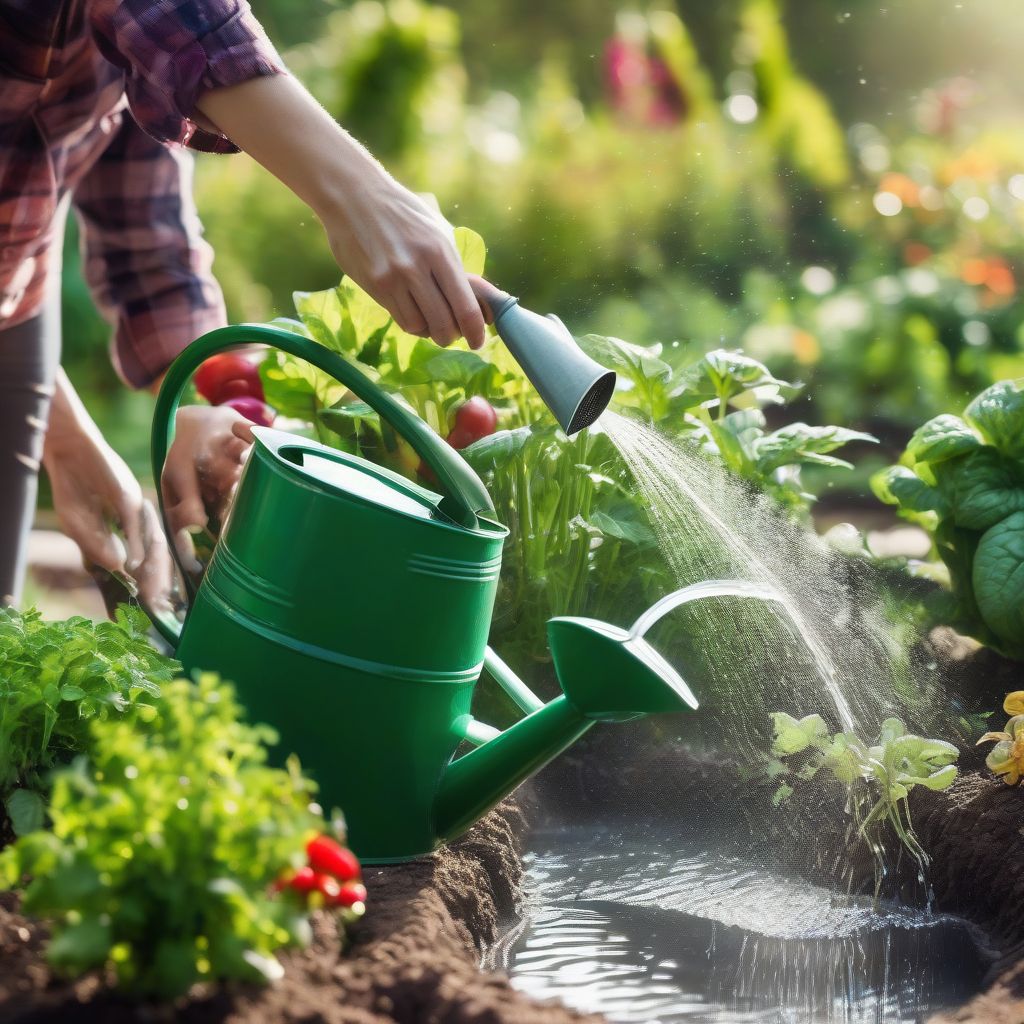Imagine biting into a juicy, sun-ripened tomato, warm from your own organic garden. Now, imagine achieving that same delicious bounty while using significantly less water. It’s not a pipe dream; it’s entirely possible with a few smart water conservation strategies. In this guide, we’ll explore practical and effective tips to help you cultivate a thriving organic garden while minimizing your water footprint. As a nutritionist and meal prep coach, I understand the importance of fresh, healthy produce, and I’m passionate about helping you grow your own in a sustainable way.
Why Conserve Water in Your Organic Garden?
Beyond the obvious environmental benefits, conserving water in your organic garden also leads to healthier plants. Overwatering can deprive roots of oxygen, leading to root rot and other diseases. By watering deeply and less frequently, you encourage roots to grow deeper, making them more resilient during dry spells. Plus, you’ll save money on your water bill!
Effective Water Conservation Techniques for Your Organic Garden
Soil Improvement for Optimal Water Retention
The foundation of a water-wise organic garden starts with healthy soil. Adding organic matter like compost, aged manure, or cover crops improves soil structure, allowing it to hold more water. Think of it like a sponge; the more porous your soil, the more water it can absorb and retain. “Healthy soil is the cornerstone of a productive and water-efficient garden,” says renowned gardening expert, Jane Doe, author of “The Sustainable Gardener’s Handbook.” Amend your soil regularly to ensure optimal water retention.
Mulching: Your Garden’s Protective Blanket
Mulching is like adding a protective blanket to your garden beds. A layer of organic mulch, such as straw, wood chips, or shredded leaves, helps to suppress weeds, which compete with your plants for water. It also insulates the soil, keeping it cooler in summer and warmer in winter, and reduces evaporation. Aim for a 2-3 inch layer of mulch around your plants.
Smart Watering Practices: Deep and Infrequent
Watering deeply and less frequently encourages deeper root growth. Instead of frequent shallow watering, which only moistens the surface, water deeply enough to reach the root zone. This trains the roots to grow downwards, making them more drought-tolerant. A good rule of thumb is to water until the top 6-8 inches of soil are moist. You can check this by sticking your finger into the soil.
Choosing the Right Irrigation Method: Drip Irrigation for the Win
Drip irrigation delivers water directly to the roots of your plants, minimizing evaporation and runoff. Soaker hoses are another efficient option, slowly releasing water directly to the soil. Avoid overhead watering, which can lead to water loss through evaporation and can also contribute to fungal diseases.
Grouping Plants with Similar Water Needs: Hydro-zoning Your Garden
Group plants with similar water needs together. This allows you to water each zone according to its specific requirements, preventing overwatering or underwatering. For example, group drought-tolerant plants together and water them less frequently than thirstier plants.
Harvesting Rainwater: A Sustainable Solution
Collecting rainwater in barrels or cisterns is a great way to conserve water and reduce your reliance on municipal water. Rainwater is naturally soft and free of chlorine and other chemicals that can be harmful to plants. You can use it to water your garden, wash your tools, and even flush your toilet.
Utilizing Drought-Tolerant Plants: Embrace Native Species
Choosing drought-tolerant plants can significantly reduce your watering needs. Native plants are particularly well-suited to your local climate and require less water than non-native species. Consider incorporating drought-tolerant varieties into your garden design.
Timing is Everything: Water in the Early Morning
Watering in the early morning, before the sun is at its strongest, minimizes water loss through evaporation. Avoid watering in the evening, as this can create humid conditions that favor fungal diseases.
Monitoring Soil Moisture: Know When to Water
Don’t just water on a schedule. Check the soil moisture regularly to determine when your plants actually need water. Use a moisture meter or simply stick your finger into the soil. If the top inch of soil feels dry, it’s time to water.
Composting: Closing the Loop
Composting your kitchen scraps and yard waste creates a valuable soil amendment that improves water retention. Compost also adds nutrients to your soil, reducing the need for synthetic fertilizers. It’s a win-win for your garden and the environment.
 Watering Plants
Watering Plants
Conclusion
Conserving water in your organic garden is not only beneficial for the environment but also for the health and productivity of your plants. By implementing these simple yet effective strategies, you can create a thriving and sustainable garden that produces delicious, healthy food while minimizing your water footprint. Remember, every drop counts! Start small, experiment with different techniques, and find what works best for your garden. Share your own water conservation tips in the comments below, and let’s work together to create a greener, more sustainable future.



